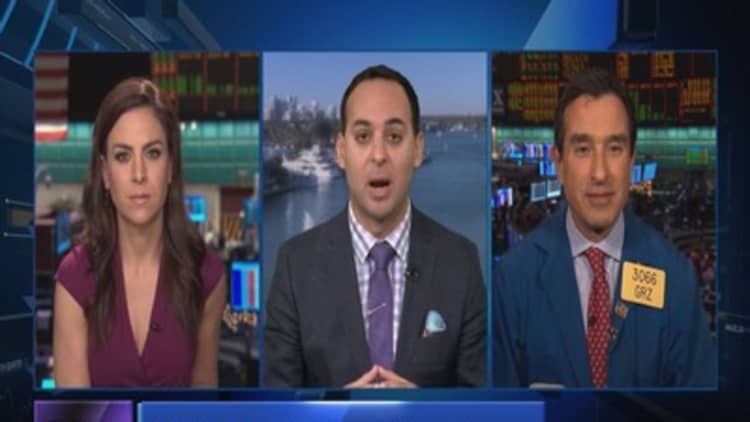Gold fell on Monday in line with a retreat in oil prices, giving up some of last week's gains, but moves were range bound in thin liquidity in a holiday-shortened week.
Gold rose nearly 1 percent during Christmas week, but remains on track to fall for a sixth successive quarter, its longest run of quarterly losses since the mid-1970s. It is down nearly 10 percent this year.
Spot gold was down 0.65 percent at $1,068.51 an ounce, while U.S. gold futures for February delivery settled down $7.60 an ounce, or 0.7 percent, at $1,068.30.

"It's the time of year when investors are looking at losses in their portfolios to offset capital gains," said Dan Heckman, national investment consultant for U.S. Bank Wealth Management in Kansas City.
"Technically and fundamentally, gold's in a bad spot here and we don't really see relief until we get somewhere into 2016. We're seeing a lot of money being pulled out of commodity ETFs and there's no buying interest."
Prices hit their lowest since early 2010 this month in anticipation of the first U.S. interest rate rise in nearly a decade. Though gold recovered lost ground in the wake of the announcement as dealers holding short positions covered, it remains under pressure, awaiting more clues on monetary policy.
"If you look at the last year's decline, that was due almost exclusively to a much stronger dollar, and that was due to the Fed being the only central body to raise rates with any conviction," ING analyst Hamza Khan said.
"The question of whether gold is going to recover in 2016 or not will depend not on whether the Fed hikes rates or not, because that seems to be a given, but whether it is the only one to hike rates."
Oil prices fell 3 percent after the long Christmas weekend, pressuring global equities lower. Gold is positively correlated to oil as the metal is seen as a hedge against petroleum-led inflation.
Interest in gold was muted in the major bullion-buying centers in Asia overnight, dealers said, though data showed China's net gold imports from Hong Kong rose month/month in November as prices fell to multi-year lows.
Silver posted the biggest declines of the main precious metals, down 3.3 percent at $13.87 an ounce. Platinum was down 0.9 percent at $873.25 an ounce, while palladium was down 1.5 percent at $550 an ounce.


